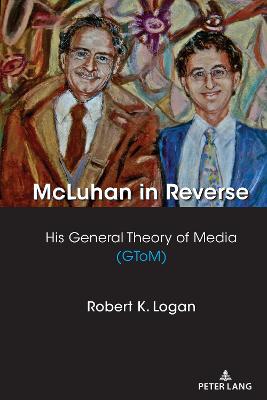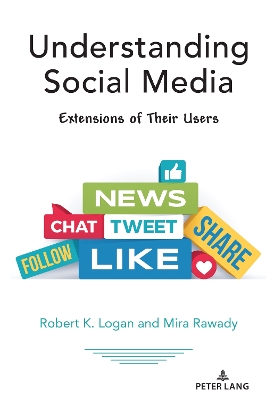Understanding Media Ecology
3 primary works
Book 3
Looking at the future of the library from the perspective of McLuhan's original vision, Logan has carefully updated the text to address the impact of the Internet and other digital technologies on the library. McLuhan prophetically foreshadowed the transformative effect that computing would have on "mass library organization, " saying it would become obsolescent. It is perhaps no coincidence that a key theme of the book is that libraries must strive to create context given today's hyper information overload. The authors believe this task can be achieved by putting together a compact library of books providing an overview of human culture and scholarship.
This book is based on the original text that McLuhan and Logan wrote. Logan's updates are integrated in the main text and clearly identified by markers. This preserves the flow of the original text and at the same time provides updates in the context of the original study. Other significant updates include two new chapters: Chapter 6 provides a LOM (Laws of the Media) treatment of the new post-McLuhan digital media, and Chapter 7 discusses the impact of these media on today's library. A second part to the concluding Chapter has been added to update some of the conclusions reached in 1979, and there is also a new preface.
Book 8
McLuhan in Reverse proposes two new and startling theses about Marshall McLuhan’s body of work. The first argues that despite McLuhan’s claim that he did not work from a theory, his body of work in fact constitutes a theory that Robert K. Logan calls his General Theory of Media (GToM). The second thesis is that McLuhan’s GToM is characterized by a number of reversals, including his reversals of figure and ground, cause and effect, percepts and concepts; and the medium and its content as described in his famous one-liner "the medium is the message."
While McLuhan’s famous Laws of Media are part of his GToM, Logan has identified nine other elements of the GToM. They are his use of probes; figure/ground analysis; the idea that the medium is the message; the subliminal nature of ground or environment revealed only by the creation of an anti-environment; the reversal of cause and effect; the importance of percept over concept and hence a focus on the human sensorium and media as extensions of man; the division of communication into the oral, written, and electric ages along with the notions of acoustic and visual space; the notion of the global village; and finally, media as environments and hence media ecology.
Book 12
The purpose of this book is to understand the nature of social media and the impact they are having on almost all aspects of modern-day existence from family life and social interactions to education and commerce. Just as fish are unaware of the water they swim in and we humans are unaware of the air that we breathe so it is that the users of social media are unaware of the effects of these media and take their existence as a natural part of their environment. The authors make use of Marshall McLuhan’s media ecology approach to understanding media in order to reveal the effects of social media on their users, how they are changing the nature of our social interactions and how we through our interaction with social media have become actual extensions of our social media, the reverse of McLuhan’s notion that media are extensions of mankind.
The authors analyze the major social media apps including Facebook, Instagram, Snapchat, Reddit, Tinder, YouTube, TikTok, Twitter and blogs as well as examining the Splinternet and the social media scene in Russia, China, North Korea, Vietnam and the Islamic world. Understanding Social Media studies the impacts of social media monopolies, the nature of advertising and branding in social media apps and the social media front in cyberwarfare and concludes with an analysis of the social media counter revolution waged by players who actually helped to create social media.


